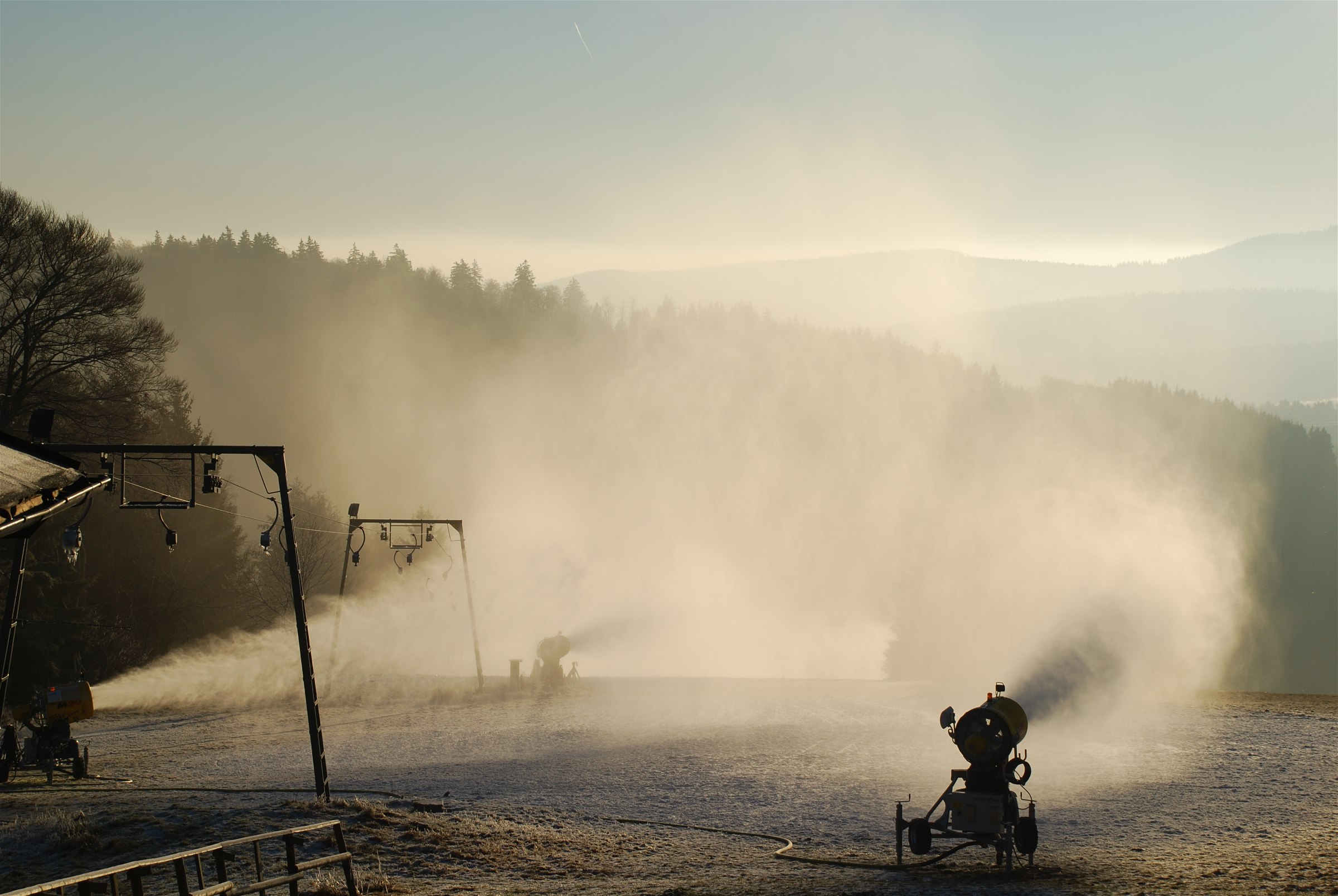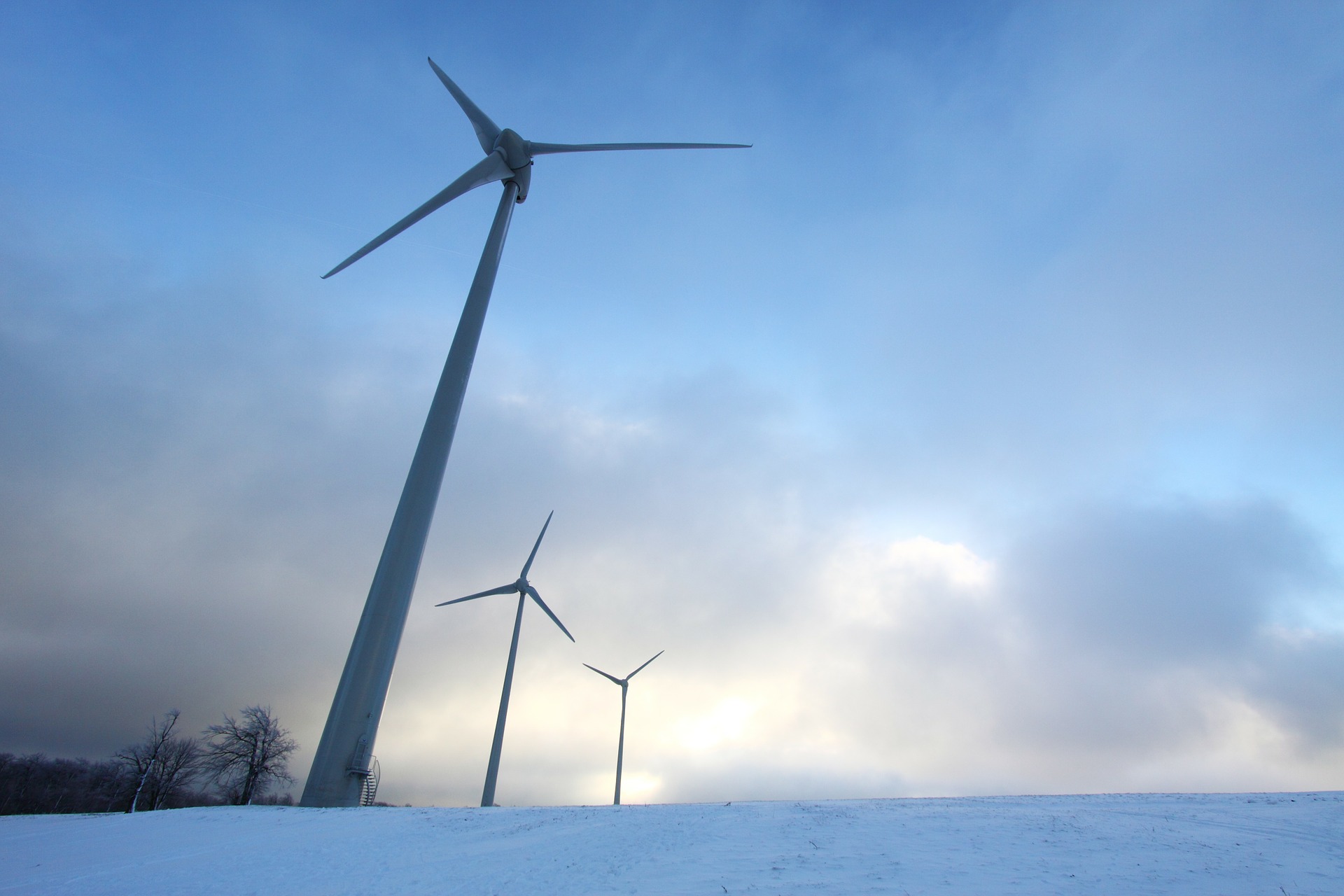
How does snowmaking work ?
Clear water without additives
Snow consists of many small ice crystals, which are usually strongly branched. The exact shape of the snowflakes depends on the temperature, degree of humidity, height of fall and wind dispersion during formation. Technically produced snow is physically no different from naturally formed snow. It consists of ice crystals, which are nothing more than pure frozen water with air inclusions. The use of chemical additives is prohibited in Germany. That is why the term "artificial snow" is not a technically correct designation for snow produced in this way.

Water freezes in the cold air
Classic snowmaking is used almost exclusively in the Sauerland winter sports arena. The finely atomized water freezes in the cold air. This is why snow guns can only produce snow if the ambient temperature is cold enough. The air must be at least minus two degrees, preferably below. This is because snow production is then more effective. Snow guns achieve optimum snow production at temperatures of minus ten degrees.
Low humidity also has a positive effect on the snowmaking result. If the air is particularly dry, the systems can even produce snow at plus two degrees. How much snow a snow gun can produce depends on the ambient temperature. At minus three degrees, around nine cubic meters of snow are produced per hour, at minus ten degrees around 60 cubic meters.

Snow cannons and snow lances
In the Sauerland winter sports arena, fan guns (snow cannons) and snow lances are used. Lances are more energy-efficient, but require somewhat lower temperatures. In addition, the losses due to drifting are greater. This is why the majority of snow guns are fan guns. These look like an aircraft engine. In the middle of the device is a propeller that generates a strong air flow. Around it are several rings with nozzles. This is where the mixture of water and compressed air comes out.
A snow lance is an aluminum tube up to twelve meters long with fine nozzles at the tip. A mixture of air and water is blown through these. The water atomizes into fine droplets, which then also trickle to the ground in the cold air as fine ice crystals.

Store cold like in a refrigerator
The snow is thrown directly onto the slope, which is then groomed straight away. Or it is piled up in large mounds and stored in these depots. The snow produced and stored in this way is a much more robust, durable base than natural snow. Not only because technically produced snow melts less quickly due to the coarser ice crystals. The snow blankets and deposits form a light, protective layer of ice on the outside. Cold temperatures prevail on the inside. This means that the temperature is stored for a long time, just like in a refrigerator. On the slopes, the snow groomers ensure that a very compact layer of snow is created, which also offers a high level of protection against possible mild outside temperatures.
Even at plus temperatures, there is hardly any melting loss, especially in dry air. Well-prepared slopes or created depots can easily survive a mild phase lasting several weeks in precipitation-free weather. This is precisely the principle of technical snowmaking: using cold weather phases to produce snow in order to bridge mild periods. This is why the average winter temperature is only a relative value for assessing snow reliability.



